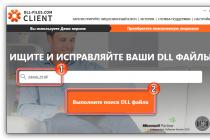Consider a hypothetical situation: you have built a great website, a great mobile app, or a great online store. You also have customers who are loyal to your traditional, “non-digital” business and who have written a lot of praise about you on social networks.
"It doesn't matter how beautiful the site is, if no one is visiting it, then good luck building your Internet business." - John Brandon, editor of the online publication Inc.com.
About customers obediently following their favorite brand from offline to online, it was, of course, a joke - if everything were so simple, the billion-dollar Internet industry would become completely useless.
Your landing pages/websites may be amazing, but most likely, by default, they are in the "dark corner" of the Internet, where traffic is as rare as the appearance of the Loch Ness monster before the eyes of astonished bystanders.
So what to do?
You should think about attracting new visitors to your landing page or eCommerce site. You need to build your own traffic acquisition strategy. There are a number of options for this, from paid advertisements to content marketing. We will cover these topics, but first we need to explain the key concept:
Communication with the audience.
You must use your traffic acquisition strategy to connect with your target audience—the people who are most likely to become paying customers.
Even if you're new to internet marketing, you've probably read a lot about blogging, paid traffic channels, and social media marketing. This guide takes a different approach - we'll give you the holistic view you need to create a powerful marketing strategy.
Traffic acquisition is much more than search engine marketing (SEM) using Google AdWords: it is one of the most important marketing techniques to reach a target audience.
Need customers, not just traffic
Marketers often group traffic into different categories: traffic that converts into sales and traffic that doesn't. Traffic that converts in the long run and traffic that converts in direct response to a conversion action. There is "junk" traffic, good traffic, targeted traffic. What does all of this mean?
Some type of traffic is more valuable to your company than others. But this distinction is always subjective and depends on the unique needs of your business. As emphasized many times in this guide, you need to understand the marketing objectives: from this point of view, you will be able to determine what kind of traffic is right for you.
It means taking a step back to see the big picture and understand your goal of acquiring customers.
What target audience are you hoping to reach?
Answer this question first. The next step is to determine where exactly the people you need are grouped on the Internet. You may decide that the most direct and productive way to acquire leads is to reach your audience through Facebook or LinkedIn. You may decide that you need to expand the readership of your blog.
Cloud service Speak2Leads, for example, is in the very early stages of launching a traffic acquisition strategy. As part of this process, the company launches a blog on its website that publishes posts from top sellers in the industry.

But here's the problem - the site does not yet have a wide audience. Speak2Leads publishes new content on a regular basis, so over time, readers of the blog will certainly appear. But this process does not happen by magic, and the problem of attracting an audience will not be solved overnight - it takes time, dedication and patience. Realistically speaking, it takes 6 to 8 months for a blog to prove itself as a lead generation factor.
At the same time, Speak2Leads provided the rights to publish their texts on third-party sites ( syndicated content), such as Business2Community, a website with an established audience spanning small business owners, entrepreneurs, and CEOs. And that's not all - Business2Community, in turn, syndicated this content to the Yahoo Small Business marketing platform.

Initially publish content on the blog, and then expand the audience by distributing original materials. The idea is to find an audience that is much larger than the one you have and connect with them in a substantive way. One way to do this is to advertise on social media. Another way is to distribute branded content through a major online publisher.

This distinction brings us to an important point: distribution is the heart of internet marketing. To direct visitors to the site, you need to position the brand outside the Internet. This relevant concept applies to almost every marketing environment.
Eagle Rock Brewery has grown its craft beer customer base through partnerships with local restaurants.

Eagle Rock Brewery's marketing practice embodies a concept previously used by Estee Lauder to build its cosmetics business—distributing products through chain department stores, i.e., in places where target customers are most likely to spend money. Today, Estee Lauder's international empire is worth billions.
The main difference between traffic acquisition and more traditional distribution methods is that you have to do more than just go where your potential customers are likely to be. Attract them to your landing pages/sites and motivate them to visit again.
Understand the Key Drivers of Internet Traffic
Key driving forces - drivers– traffic generally fall into one of two categories – paid and free.
Free traffic includes visitors coming to your landing pages/sites through organic search, word of mouth from referrals, social media posts, viral videos, news outlets that follow your business online and link to your site.
Paid traffic refers to users who come to your website through banner ads, social media ads, paid blog content, and more. support” or “from our partners”. Companies are required by law to indicate when advertising is paid.
One of the most famous online marketing myths is that free traffic is better than paid traffic. This is not true - both types of marketing require a significant investment of time and money. In other words, "free traffic" is by no means free - you still need to invest time and human capital in developing a thoughtful strategy and putting it into practice.
The next two paragraphs include a general overview of paid and free Internet traffic drivers. Let's start with the big picture and then delve into the details.
Use Free Traffic Drivers
There are several main sources of free visits in online marketing. These include the following channels:
Public Relations:
To get attention from media outlets, build relationships with journalists. To act in the best interests of the brand, connect with the top bloggers in the industry, and give them your content to publish.
Search Engine Optimization (SEO):
Develop a strategy to increase the position of the site in search engines. When potential customers are looking for information on the Internet, your brand should be at the top of the search results list (SERP).
Social media:
Blogging:
Share your knowledge and expertise through the blog. This way you will become a reliable source of information for existing / potential customers.
Video Marketing:
Create compelling videos that explain what your offers are and tell your brand's story. Branded videos also have some entertainment value and go viral.
Content syndication:
No audience for video or text materials, what does your company produce? Publish content on your home resource and distribute it through websites or video channels (for example, YouTube) that are known to have a wider audience. Part of the viewers or readers covered by your content will go to the landing page or website
Create a subscription base:
Attract visitors just once is not enough. Encourage them to come back again and again. A list of email addresses will help achieve this goal. For example, you can send a notification to subscribers about new blog posts (see example below):

As we mentioned in the previous section, the term "free traffic" can be misleading. No magic - companies still need to invest time and resources to build a traffic acquisition strategy through the channels listed above.
Take the Speak2Leads blog as an example. As we mentioned, the brand syndicates its own content with third party media channels including Business2Community and Yahoo Small Business. The company also promotes its blog posts through sales discussion groups on LinkedIn, the social knowledge-sharing service Quora in CRM topics, and, to a certain extent, on Twitter.
Although the blog is relatively new, these posts drive a small amount of referral traffic to the Speak2Leads website. Speak2Leads content is distributed by members of LinkedIn groups who are interested in reading these posts. Readers who liked the article share a link to it on social networks.
If the company decides to syndicate the content, the article is republished by Business2Community and Yahoo Small Business, driving referral traffic either to the Speak2Leads site directly or via social media.
The cost of actual web traffic is zero. But the creation of this "marketing engine" requires payment:
- Hiring a content strategist to oversee editorial policy and build relationships with a content syndication partner (Business2Community).
- Time to prepare texts, often with a cost (CEO time spent on an article is paid at the highest rate), or the direct cost of hiring a copywriter or editor.
- The costs associated with building a social marketing strategy, as well as individual costs for holding promotions in social networks.
But the skills of your team will reduce marketing costs. A case in point is the story of the Dollar Shave Club, a Santa Monica-based startup that sells subscription sets of men's shaving supplies.
CEO Michael Dubin had some experience as an improv actor. So Michael and his colleagues made a funny "viral video".
Result? Millions of dollars in venture capital funding and 5,000 new customers signed up to deliver razor kits within a day of launching the campaign, all thanks to a $4,500 video.

Don't expect a great video or great text to drive traffic to your web properties overnight. Fabulously successful stories - as they are shown in Hollywood movies - are rare, especially in online marketing. Let's take a lesson from Karen Cheng, founder of the video channel "Dance in a Year" (roughly translated - "Learn to dance in a year").
So, Karen learned to dance for a year and documented this process on video every day. On early recordings, she moves like a beginner dancer. As the video progresses, you can see that Karen's movements are becoming more and more polished. On the final recordings, she dances like a true professional.
Karen's videos tell an amazing story of patience, dedication, and performance. They give strength. They inspire. That's why this "home movie" has over 6,000,000 views on YouTube to date.

What at first glance seems like luck is actually part of Karen's carefully planned marketing strategy.
“I put a lot of effort into marketing and it started long before the release of the first video. It wasn't an accident that it went "viral" - it was the result of hard work." - Karen Cheng in an article for Fast Company magazine.
Here is what Karen writes about her marketing moves:
2. On the second day, bloggers who had seen Karen's video the day before began retelling her story through new media channels: Mashable, Jezebel and Huffington Post. These blogs have generated significant traffic growth for Karen's video channel. Expanding the range of traffic sources increased the number of views to 800,000 per day.
3. The popularity of the video "pushed" Karen to the main page of YouTube. This chain of events helped Karen reach 1.8 million views on her third day.
The video also helped connect with potential sponsors of Karen's project. These included Lululemon and American Apparel, two brands that Karen wanted info support from. The offer did not go unanswered: the companies posted her video on their social accounts.
Among other things, Karen released her video on Tuesday, guessing that on Monday, potential viewers are likely to catch up on work that they did not finish before the weekend. Her tactic was to "catch" the audience in the offices at just the right moment, keeping the entire week available to grow the video's popularity.
The beauty of the strategy lies in two aspects:
- Marketing and distribution of the product is relatively cheap.
- The strategy is applicable to any quality unique content, including eBooks and blog posts.
It's also important to be aware of the "echo effect" caused by this marketing initiative: if you type "learn to dance" into Google, Karen's video will appear at the very top of the SERP.
Google Keyword Planner reports that this phrase is one of the highly competitive search terms—in other words, users who ask search engines "How to learn to dance?" are in intense competition for attention.

Karen's video, promoted by the high social and PR activity of its creator, is in the top ten search results. Such a high SERP ranking generates a strong residual effect and leads to increased traffic.

"How to learn to dance?" - highly competitive search query
Attracting visitors to the site for the first time, immediately take care of their return. Email marketing is an inexpensive and powerful way to achieve this key marketer goal. This is how the PassivePanda blog grew from zero to 350,000 unique visitors in a year.
If you ever feel confused in your marketing practice, remember that people are the heart and soul of your marketing strategy. You must fight for the love, support and attention of the audience.

Buy traffic? - Also a great solution!
Paid marketing channels are powerful traffic drivers. These include online banner ads, search marketing campaigns on Google, Yandex, Bing and retargeting campaigns aimed at users who have visited your landing pages/sites before.
Purchasing paid traffic is a strong strategy when it comes to building brand awareness or driving customers to your eCommerce landing pages/website.
With enough care, the online advertising ecosystem will greatly enhance your company's results. But if you spend your advertising budget without setting the final goals, then buying traffic will not bring any benefit.
Small business owners and startup organizers are often hesitant to buy traffic.
Why?
On the one hand, they are skeptical about online marketing in general. On the other hand, they do not want to risk money. But by ignoring paid marketing channels, you are missing out on users.
Facebook, for example, has launched an advertising program where marketers purchase traffic on a Cost Per Install (CPI) basis. Users install applications directly from the Facebook mobile platform, and advertisers pay for each such action.

In addition, in terms of costs, this method of acquiring traffic is more than competitive - sometimes the cost of a visitor is less than $1. Facebook is not the only mobile advertising platform - there are a number of options available to match the amounts your target customers are willing to pay with the prices required to achieve a profitability (positive ROI) level.
And here's the thing: Companies that avoid the risk of investing in paid marketing channels are probably doing it wrong. Contrary to what our instincts tell us, marketing is not a "money sewer". Done right, marketing becomes a reliable profit driver.
The Harvard Business Review, one of the most respected online business publications, published an article titled "End the War between Sales and Marketing" (End the War between Sales and Marketing). The meaning of the article is clear from the title: both business units are included in one team, the power of which increases many times when sales and marketing are equal in importance and work together.
When your marketers know their job, their activities don't even require budgetary expenses. This is a controversial point of view, but it should be announced. If your marketing department is a "money sewer", then it's probably best to disband it. Otherwise, why pay for nothing?
The trick, however, is not to spend the million effectively. Start tests with a small investment in marketing (as they say, "budget") and increase the budget gradually. Here's what business owners will be especially pleased to know - you can start testing even with a hundred dollars. Yes, you will lose them, but the trick is to save the data you collect about which pricing models, targeting options, and ad networks are best for you.
AdRoll cloud service allows you to develop and launch a new retargeting campaign in just 3 steps. In fact, you get $60 as a gift for a two-week trial.

One more step - and a new retargeting campaign will be launched
Thanks to the presence of online media giants like Facebook and Google - as well as thousands of small companies - the PPC marketing industry is worth hundreds of billions of dollars. And be sure: these numbers are constantly growing (we will dwell on the methods of successfully buying traffic in more detail in the next posts of the Online Marketing for Beginners series).
Inbound marketing as your company's "pull mechanism"
Inbound marketing is a term that has been popularized by Boston-based marketing company HubSpot over the past few years. The term is catchy and catchy, but what exactly does it mean?
In a nutshell, inbound marketing is the leverage that drives traffic to your landing pages and websites. It is a marketing discipline that encourages business leaders to position their companies as "pull" rather than "push" market mechanisms.
Examples of inbound marketing: branded content (distributed via blogs and video channels), social media, and giveaways/free product samples. Inbound marketing is optimal for companies positioning themselves as opinion leaders in a certain field and valuable sources of information.
As in any other marketing initiative, the most important component here is quality. If the content is bad, no one will want to read or watch it, share links to it (because there are many others on the Internet - good- texts, videos, etc.). The only thing your company can't do is fake authenticity marketing message. So focus on value, not tricks that potential customers see right through.
Key Findings
1. Marketing makes your web resources more visible on the Internet.
2. Traffic by itself doesn't work. You have to invest time and energy to connect you with the right audience and bring visitors to landing pages.
3. Acquiring traffic takes time and resources. Invest them in a strategy and back up your plans with action.
4. Marketing generates income. If there is no measurable return on investment, you are probably doing something wrong.
5. Do not rush to the conclusion that paid traffic is inferior to organic. Well-organized PPC campaigns are very effective.
6. Focus on the quality of products and marketing content. If it's stunningly good, there will be an "echo effect" resulting in free social media marketing and repeat visits to your landing pages/websites for a long time.
7. Consumers feel cheated from miles away. Give them the respect they deserve. Start with your target customers and work backwards through the conversion path to refine your marketing strategy.
High conversions for you!
According to materials:
We continue to conduct our “ABC of Internet Marketing”, in which we reveal the basic concepts in simple words, without abstruse terms and complex examples. Read, join - everything is simple and clear with us! In this article, we will tell you what site traffic is, what types of it are, and how to find out site traffic.
What is internet traffic?
To best imagine this, let's move from the virtual world to the offline world and analyze the concept of traffic using a specific example. Each of us has a shop near the house, where we run to buy bread, milk or something for dinner. A saleswoman Aunt Masha, whom you know very well, works there. In addition to you, people who live or work nearby enter the store every day. Imagine that the store is a website, Aunt Masha is its owner, and the people who go there are website visitors. So all the people who went to the store today are traffic.
The same thing happens in the online world. Traffic is the number of people who visit the site per unit of time - a day, a month, etc. 150 uniques - unique visitors).
It is clear that the more traffic to the site, the better, because those people who visit the site are your potential customers, your consumers. They visit the site for a reason - they are interested in your offer, goods, services.
So, Internet traffic is the number of people who visit the site per unit of time - day, month or year.
Sources of traffic to the site
Now let's look at how visitors get to the site. We are again transported to the offline world and stand at the door of the store. All these people who enter it - how did they find out about the existence of this store, why did they come here? One, for example, saw an advertisement in the elevator: “Wow, there is milk for 39 rubles - you have to go!”. The second was given a leaflet on the street. The third heard the advertisement on the radio, the fourth was told by a neighbor. These are the channels through which visitors come.
The online world also has its own sources of traffic:
- Search results. You are looking for information in a search engine - it gives out sites for your request. You follow links, become a visitor and increase website traffic. We will tell you more about search results in the next issues of our “ABCs of Internet Marketing”.
- Contextual advertising. You again enter a query into a search engine, and the topmost ads are contextual advertising. Companies buy these places and pay for clicks.
- Advertising in social networks. Have you seen ad blocks on the side on VKontakte or Odnoklassniki? By clicking on them, you again get to the site.
- Direct entries. People learn about the site not only from the Internet - someone is advised by acquaintances, someone hears advertising on the radio or TV.
So, there are several types of traffic, thanks to which a person gets to the site. If you are the owner of the resource, it is in your interest to use all these sources. The bigger, the better!
How to know website traffic?
In the good old real world, website traffic analysis is a piece of cake. You can put a stern guard with a notebook at the entrance to the store so that he manually counts the number of visitors. You can install counters at the entrance, which automatically respond to each visitor and send a report to the store manager.
Last week. In it, we will talk about very basic concepts: what is traffic arbitrage, what are the pros and cons of arbitrage, and what is the difference between arbitrage and affiliate marketing.
Text transcript | Presentation
The next lesson will be out tomorrow. It will focus on the participants in the arbitrage market. The release schedule for all lessons is available on the Mobio School website. You can ask any questions about arbitration in the comments or in our VKontakte group.
Let's start with the fact that there are several ways to make money on the Internet:
- eCommerce,
- advertising on your own content: publics in social networks, blogs,
- infobusiness,
- affiliate marketing, CPA marketing, traffic arbitrage
(Product + People who can buy it) & Tell these people about this product = $
This formula also works in traffic arbitrage. Listing the ways to earn money, we have highlighted the terms affiliate marketing (Affiliate Marketing) and traffic arbitrage under one paragraph, but it is important not to confuse these concepts.
The difference between affiliate marketing and traffic arbitrage
Affiliate marketing and traffic arbitrage are two different concepts. Let's look at them in more detail.affiliate marketing(Affiliate Marketing) - a way to earn money through a commission on the sale of someone else's product. In this case, it is not necessary to have your own product, you need to help sell someone else's product. As an example, any store that sells Pepsi is affiliate marketing.
CPA Marketing- a special case of any affiliate marketing. The only difference is that in CPA marketing we get paid for a specific action, lead or application.
Affiliate marketing requires traffic or users. At this point, there is a need to attract traffic. Traffic arbitrage is a way to attract paid users to the application. You can also attract traffic for free, for example, launch your own video blog, collect subscribers and then attract them to the application.
If we look at the concept of "arbitrage" in a broader sense of the word, in economics this term refers to a type of transaction in which we sell the same product in different markets and earn interest on the difference from the sale. Let's take currency as an example: we bought dollars yesterday in order to sell them in a day and earn on the difference.
Equivalent arbitrage is another arbitrage method in which we earn on the difference in the components. Any wholesale sales are an example of equivalent arbitrage. We buy goods in bulk and sell them at retail: we earn on the same product by buying it in different combinations. As an example, we assemble a computer by parts and sell it as a complete computer.
In our case, mobile arbitrage is equivalent arbitrage. We buy impressions and clicks and we sell actions and installs.
Ways to sell paid advertising on the Internet
There are several models for selling paid advertising on the Internet. Let's look at what methods exist:SRT(Cost Per Time) - we buy out a fixed time of posting on the site.
CPM(Cost per mille) - we buy a thousand impressions.
CPC(Cost Per Click) - we buy clicks.
CPA(Cost per Action), CPI(Cost per Install) or CPI(Cost per lead) - we pay for actions, installs, leads.
In mobile arbitrage, we buy impressions (CPM) and clicks (CPC) from traffic sources, and then we sell actions, installs or leads (CPA, CPI, CPL) to advertisers. Accordingly, we earn on the difference between buying and selling.
Why is arbitrage good?
Let's analyze how attracting traffic is useful for business, and what are the advantages of being an arbitrator.For business:
- It is easy to scale your business: if you have a product and you offer a decent reward to partners, they will easily scale up sales and start selling your product in different markets.
For referee:
- There are no production and logistics costs.
- You are responsible for only one task: to attract traffic.
- Don't think about Customer Service: no need to communicate with customers or suppliers.
- Low entry threshold: anyone with no experience can start attracting traffic, it's quite simple at the start.
What is wrong with arbitrage
There are also negative aspects in arbitration both for business and for the arbitrator himself.For business:
- Partners bear less responsibility for the goods.
- It is difficult to control the methods and methods of promotion that partners use.
- Affiliates can potentially damage their image and reputation through dishonest promotion methods.
- Instability of earnings, which directly depends on the situation on the market.
- High dependence on changes in the rules of advertising platforms, requirements and KPIs of advertisers.
- Constant level of stress: there is high competition in the market, working campaigns that worked and converted into profit are constantly dying, new approaches need to be invented.
Conclusion
So, we have considered the concepts of affiliate marketing and traffic arbitrage, formulated the pros and cons of attracting traffic both for the business as a whole and for the arbitrage specialist himself. In the second lesson, we will analyze which participants are present in the traffic arbitrage market.You can ask any questions about arbitration in the comments or in our














